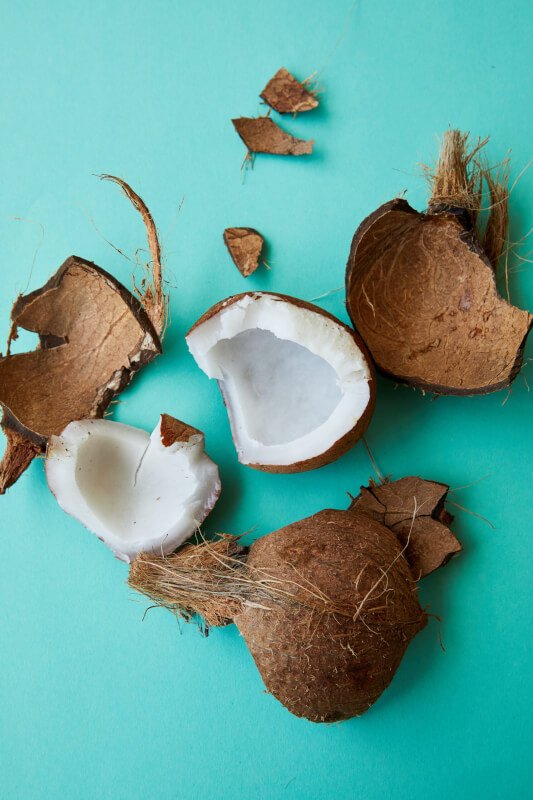Are you a milk tea lover looking to expand your brewing skills? Look no further! In this article, you will discover the secrets to mastering the art of milk tea brew. From selecting the perfect tea leaves to infusing it with the right amount of creamy goodness, you will learn all the techniques and tips to create the most delectable and smooth milk tea. Get ready to elevate your milk tea experience to a whole new level!
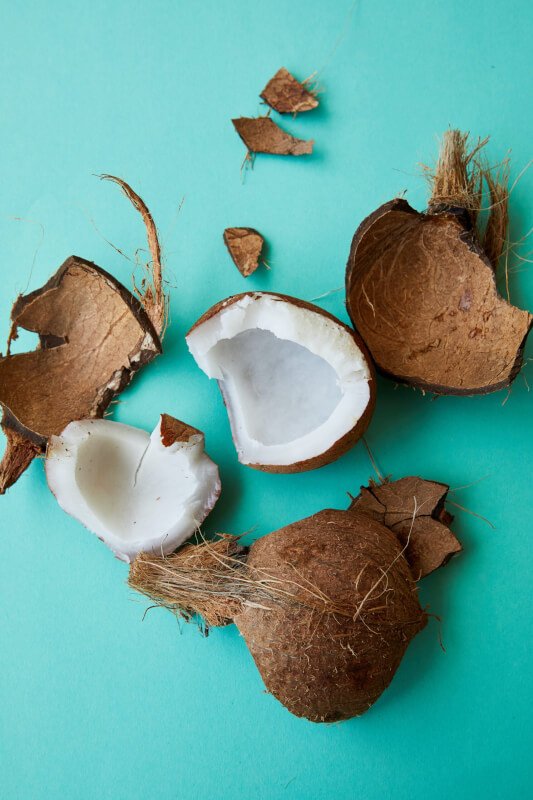
Choosing the Right Tea Leaves
Understanding different types of tea leaves
When it comes to choosing the right tea leaves for your milk tea, it’s important to understand the different types available. There are several popular options, including black tea, green tea, oolong tea, and white tea. Each type has its own unique flavor profile and characteristics. Black tea, for example, is bold and robust, while green tea offers a more delicate and grassy taste. Oolong tea falls somewhere in between, with a slightly fruity and floral flavor, while white tea is known for its subtle and sweet taste. Take some time to explore these options and choose the one that appeals to your taste buds.
Considering the quality of tea leaves
In addition to understanding the different types of tea leaves, it’s important to consider the quality of the leaves you choose. The quality of tea leaves can greatly impact the taste and overall experience of your milk tea. Look for tea leaves that are whole and unbroken, as this indicates that they have been handled with care and are more likely to retain their flavor. Avoid leaves that are crushed or have a dusty appearance, as these may produce a lackluster brew. Choosing high-quality tea leaves will ensure that you enjoy a rich and flavorful cup of milk tea every time.
Selecting the appropriate tea leaf for milk tea
When selecting the appropriate tea leaf for your milk tea, there are a few factors to consider. Firstly, consider the intensity of flavor you desire. If you prefer a stronger and bolder taste, opt for black tea or oolong tea. On the other hand, if you prefer a lighter and more delicate flavor, green tea or white tea may be your best choice. Additionally, consider the overall profile you wish to achieve. Some tea leaves have natural floral or fruity notes, which can add depth and complexity to your milk tea. Experiment with different tea leaves to find the perfect balance of flavor for your taste preferences.
Preparation and Brewing Techniques
Measuring the tea leaves and water ratio
The first step in preparing a delicious cup of milk tea is to measure the appropriate amount of tea leaves and water. The general guideline is to use one teaspoon of tea leaves for every cup of water. However, you can adjust this ratio based on your personal taste preferences. If you enjoy a stronger brew, you can increase the amount of tea leaves slightly. Conversely, if you prefer a milder flavor, decrease the amount of tea leaves. Remember, the key is to find the right balance that suits your palate.
Boiling water to the correct temperature
The temperature of the water you use to brew your tea can greatly affect the flavor and aroma of your milk tea. Different types of tea require different water temperatures to achieve optimal taste. For black tea and oolong tea, boiling water (100°C or 212°F) is usually recommended. Green tea, on the other hand, should be brewed with slightly cooler water (around 80°C or 176°F) to preserve its delicate flavors. White tea is often brewed with water at a lower temperature as well. Paying attention to water temperature will ensure that you extract the best flavors from your tea leaves.
Using the right brewing method
The brewing method you choose can also impact the taste of your milk tea. One common method is to use a teapot or teacup with a strainer. Simply add the tea leaves to the strainer, pour hot water into the pot or cup, and let it steep for the recommended time. Another popular option is to use a tea infuser or tea bags, which offer convenience and ease of use. Regardless of the method you choose, make sure to follow the recommended steeping times for the specific type of tea you are using. This will ensure that you achieve the desired flavor and strength.
Understanding steeping time and strength
Steeping time refers to the duration that the tea leaves are in contact with the hot water. This process allows the flavors and aroma of the tea to infuse into the water, creating a flavorful brew. The recommended steeping time varies depending on the type of tea you are using. Generally, black tea and oolong tea require longer steeping times of around 3-5 minutes, while green tea and white tea require shorter steeping times of 1-3 minutes. It’s important to note that steeping for too long can result in a bitter taste, while steeping for too short a time may result in a weak and flavorless cup of tea. Experiment with different steeping times to find your perfect balance.
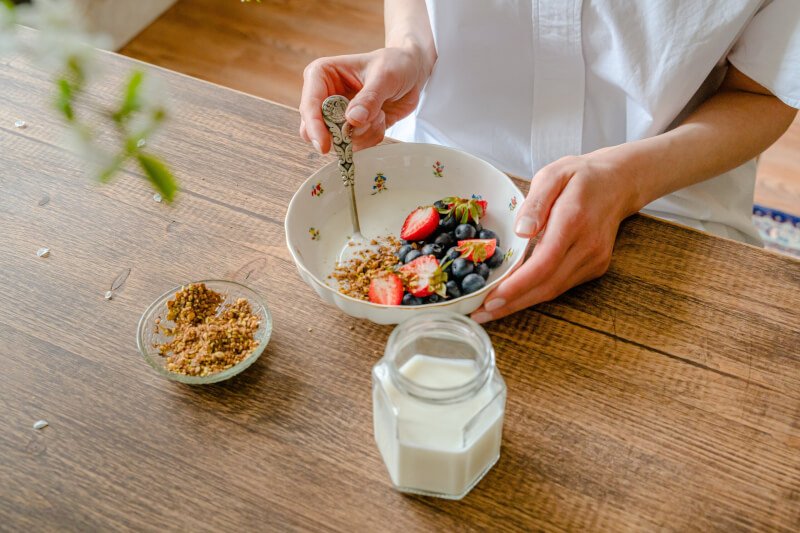
Enhancing Flavor with Additional Ingredients
Exploring different milk options
One of the key elements of milk tea is, of course, the milk. When it comes to choosing the right type of milk, there are various options to consider. Some popular choices include whole milk, skim milk, almond milk, and coconut milk. Each type of milk adds its own distinct flavor and texture to the milk tea. Whole milk tends to provide a rich and creamy taste, while skim milk offers a lighter and less fatty option. Almond milk adds a nutty flavor, while coconut milk adds a subtle tropical twist. Experiment with different milk options to find the one that enhances the flavor of your milk tea to your liking.
Choosing the right sweetener
To add a touch of sweetness to your milk tea, you’ll need to choose the right sweetener. Common options include white sugar, brown sugar, honey, and condensed milk. White sugar is a classic choice, offering a simple and neutral sweetness. Brown sugar adds a hint of caramel flavor and depth. Honey provides a natural sweetness and a unique floral note. Condensed milk adds a creamy and indulgent sweetness. Consider the flavor profile you want to achieve and experiment with different sweeteners to find the perfect balance.
Adding complementary flavors
To enhance the flavor of your milk tea even further, you can experiment with adding complementary flavors. This can be done by infusing your tea with ingredients such as vanilla extract, cinnamon sticks, or cardamom pods during the brewing process. These additional flavors can add depth and complexity to your milk tea, creating a more delightful drinking experience. Start with small amounts and adjust according to your taste preferences. Be adventurous and try different flavor combinations to find the ones that excite your taste buds.
Experimenting with toppings and mix-ins
Another way to elevate your milk tea is by experimenting with different toppings and mix-ins. Toppings such as tapioca pearls (boba), grass jelly, or pudding can add a fun and chewy texture to your drink. You can also add a scoop of ice cream or whipped cream for a creamy and indulgent treat. In addition, consider adding mix-ins such as fruit syrups, flavored powders, or coffee jellies for added flavor. Get creative with your toppings and mix-ins to create a milk tea masterpiece that is uniquely yours.
Understanding Milk Tea Variations
Classic milk tea
The classic milk tea, also known as “boba tea” or “pearl milk tea,” is a beloved favorite among milk tea enthusiasts. This variation typically consists of black tea, milk, sweetener, and tapioca pearls. The combination of the strong black tea flavor, creamy milk, and chewy tapioca pearls creates a delightful and satisfying drink. Classic milk tea is versatile and can be served hot or cold, making it suitable for any weather or occasion.
Thai milk tea
Thai milk tea is a popular variation that originates from Thailand. It is known for its vibrant orange color and unique flavor profile. Thai milk tea is made by steeping a blend of black tea and spices such as star anise, cardamom, and cloves. The tea is then mixed with condensed milk and served over ice. The result is a sweet and creamy drink with a hint of floral and spiced undertones. Thai milk tea is often garnished with a sprinkle of cinnamon or a slice of lime to enhance the flavors even more.
Hong Kong milk tea
Hong Kong milk tea, also known as “pantyhose tea” due to the traditional method of straining the tea through a cloth resembling pantyhose, is a smooth and strong milk tea variation. It is made by combining black tea leaves with evaporated milk and sweetener. The unique straining process gives the tea a silky texture and helps create a creamy and luscious beverage. Hong Kong milk tea is typically served hot and is a staple in Hong Kong-style cafes.
Bubble milk tea
Bubble milk tea, also known as “boba tea” or “pearl milk tea,” is a variation that originated in Taiwan and quickly gained popularity worldwide. This variation traditionally consists of black tea, milk, sweetener, and tapioca pearls. However, bubble milk tea has evolved to include a wide range of flavors and toppings. It can be served hot or cold and offers a delightful combination of flavors, textures, and visual appeal. Bubble milk tea is often enjoyed with an extra-wide straw, allowing you to savor the chewy tapioca pearls along with the creamy tea.

Creating a Creamy and Smooth Texture
Whisking or frothing the milk
To achieve a creamy and smooth texture in your milk tea, you can whisk or froth the milk before adding it to the tea. This process helps incorporate air into the milk, creating a velvety texture. You can use a handheld whisk or a milk frother to achieve this effect. Simply heat the milk in a saucepan or microwave and whisk vigorously until it becomes frothy and creamy. Alternatively, if you have a milk frother, follow the instructions provided with the frother to achieve the desired texture.
Using the appropriate milk-to-tea ratio
The ratio of milk to tea is crucial in achieving a creamy and balanced milk tea. It’s important to find the right balance that suits your taste preferences. The general guideline is to use equal parts milk and tea. However, feel free to adjust the ratio based on your desired creaminess. If you prefer a richer and creamier texture, you can increase the amount of milk slightly. Conversely, if you prefer a lighter texture, decrease the amount of milk. Remember to keep the overall harmony of flavors in mind and adjust accordingly.
Achieving the desired creaminess
The creaminess of your milk tea can be adjusted by using different types of milk and adjusting the ratios. For a richer and creamier texture, opt for whole milk or a milk alternative with a higher fat content. This will add a luscious and satisfying creaminess to your drink. If you prefer a lighter texture, skim milk or a low-fat milk alternative can be used. Additionally, adjusting the milk-to-tea ratio can also help achieve the desired level of creaminess. Play around with different combinations to find the perfect creaminess for your taste buds.
Avoiding graininess or separation
Graininess or separation in your milk tea can occur due to improper blending or using milk that is not properly heated. To avoid graininess, make sure to whisk or froth the milk thoroughly to ensure it is well-incorporated into the tea. If using whole milk or milk alternatives that tend to separate, such as almond milk, ensure that the milk is well-heated and properly blended before adding it to the tea. This will help prevent separation and ensure a smooth and creamy texture in your milk tea.
Balancing Flavors and Sweetness
Adjusting the strength of tea
The strength of the tea in your milk tea can greatly impact its flavor. If you prefer a stronger tea flavor, increase the amount of tea leaves or extend the steeping time. This will result in a bolder and more robust taste. On the other hand, if you prefer a milder tea flavor, decrease the amount of tea leaves or shorten the steeping time. This will yield a gentler and more subtle tea flavor. Balancing the strength of the tea with the other ingredients is essential in creating a harmonious blend of flavors in your milk tea.
Finding the right amount of sweetness
Achieving the perfect level of sweetness in your milk tea requires some experimentation. Start by adding a small amount of sweetener and gradually increase until you reach your desired level of sweetness. Keep in mind that some sweeteners, such as condensed milk or flavored syrups, can add a stronger level of sweetness compared to sugar or honey. Take note of the other ingredients in your milk tea and adjust the sweetness accordingly to ensure all the flavors work together harmoniously.
Ensuring a harmonious blend of flavors
To create a harmonious blend of flavors in your milk tea, it’s important to consider the balance between the tea, milk, sweetener, and any additional flavors you choose to incorporate. The tea should be the star of the drink, with the milk providing a creamy and luscious backdrop. The sweetener should complement the flavors without overpowering them. Experiment with different combinations and ratios to find the perfect balance that showcases the unique flavors of your milk tea.
Avoiding overpowering or bland tastes
Avoiding overpowering or bland tastes in your milk tea is all about finding the right balance. If your milk tea tastes too strong or overpowering, consider reducing the amount of tea or adjusting the steeping time. This will help bring out the other flavors and prevent the tea from overpowering the entire drink. Conversely, if your milk tea tastes too bland, try increasing the amount of tea or steeping it for a slightly longer period. Remember, achieving the perfect balance of flavors is a personal preference, so don’t be afraid to adjust until it suits your taste buds.
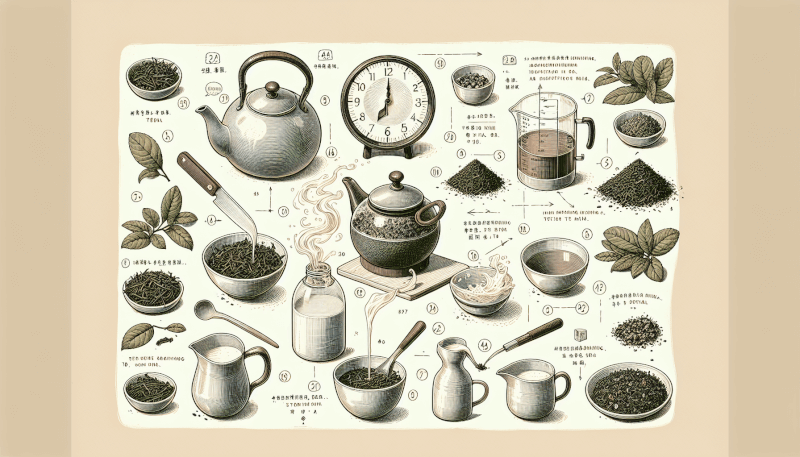
Perfecting the Tea-to-Ice Ratio
Choosing the correct amount of ice
Adding ice to your milk tea can help create a refreshing and chilled beverage, especially during hot summer months. However, it’s important to choose the correct amount of ice to maintain the overall balance. Adding too much ice can dilute the flavors and result in a watered-down taste, while adding too little may not provide the desired cooling effect. A general guideline is to fill the glass or cup with about 1/3 to 1/2 ice, but feel free to adjust this ratio based on your personal taste preferences.
Maintaining balance in diluted tea
Adding ice to your milk tea can cause the tea to become diluted. To maintain the balance of flavors, consider brewing a stronger tea concentrate. Increase the amount of tea leaves, steeping time, or both, to achieve a bolder and more concentrated tea base. This will help ensure that the flavors of the tea are not overwhelmed by the melting ice. Additionally, you can also adjust the ratios of milk and sweetener accordingly to maintain the desired taste as the ice melts.
Avoiding excessive watering down
To avoid excessive watering down of your milk tea as the ice melts, you can consider using larger ice cubes or even freezing some tea concentrate into ice cubes. Larger ice cubes melt at a slower rate, which helps maintain the balance of flavors for a longer period. Freezing tea concentrate into ice cubes allows you to add additional tea flavor to your milk tea as the ice melts. These techniques can help prevent your milk tea from becoming too diluted and ensure a consistent and enjoyable drinking experience.
Adjusting for personal preferences
Ultimately, the tea-to-ice ratio in your milk tea should be adjusted to suit your personal preferences. Some individuals may prefer a more chilled and icy beverage, while others may prefer a stronger and less diluted taste. Experiment with different ratios and find the balance that satisfies your cravings. Pay attention to the temperature, flavor, and texture of the drink to ensure it aligns with your personal taste preferences. Remember, there’s no right or wrong ratio when it comes to tea-to-ice, as long as it brings you enjoyment.
Presentation and Serving Tips
Choosing the right glassware or cups
The presentation of your milk tea can greatly enhance the overall drinking experience. When choosing glassware or cups, consider the size, shape, and design that best compliments the visual appeal of your milk tea. Transparent glassware allows the layers of the milk tea to be visible, adding to its aesthetic appeal. On the other hand, cups with intricate designs can create a more elegant and sophisticated presentation. Consider the mood and atmosphere you want to evoke and select glassware or cups accordingly.
Adding garnishes for visual appeal
Garnishes can take your milk tea presentation to the next level and provide a visual feast for the eyes. Some popular garnishes include a sprinkle of cocoa powder, a drizzle of caramel sauce, or a dusting of matcha powder. You can also add fresh fruits, such as sliced strawberries or lemon wedges, or even herbs like mint leaves or a sprig of lavender. These garnishes not only enhance the visual appeal but can also add a subtle hint of flavor and aromatics to your milk tea.
Serving temperature considerations
The serving temperature of your milk tea can greatly impact the overall taste and experience. Traditional milk tea variations are often served hot, allowing the flavors to fully develop and creating a comforting and cozy drinking experience. However, if you prefer a cold and refreshing beverage, serving your milk tea over ice is a great option. Keep in mind that certain flavor profiles may differ when served hot versus cold, so consider the desired taste and experience when deciding on the serving temperature.
Presenting milk tea in a visually appealing manner
When serving milk tea, presentation is key. Take the time to create an aesthetically pleasing and visually appealing drink. Layering the milk tea with contrasting colors or textures can create a beautiful ombré effect. Use clear glassware, allowing the layers and various components of the drink to be visible. Consider using a straw with a unique design or color to add an extra touch of visual appeal. Remember, a visually appealing milk tea not only delights the eyes but also sets the tone for a delightful drinking experience.
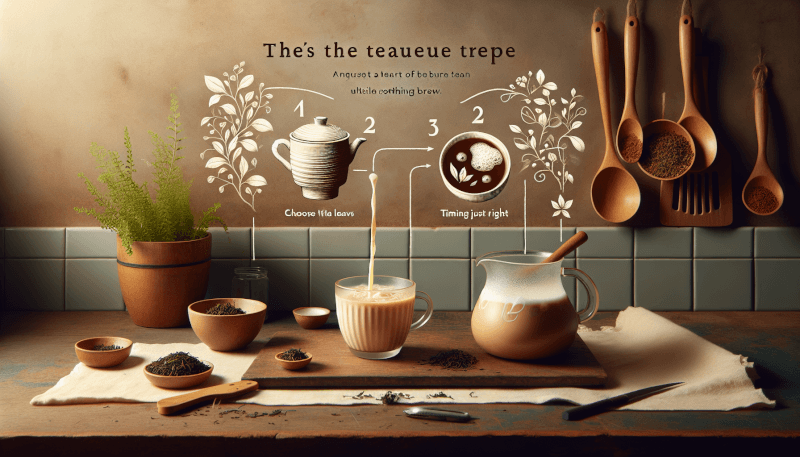
Experiments and Flavor Combinations
Mixing different types of teas
Don’t be afraid to mix different types of teas to create unique and exciting flavor combinations. Combining black tea with green tea can create a balanced and complex taste, with the boldness of the black tea complementing the delicate flavors of the green tea. Experiment with oolong tea and white tea as well, and see how their unique characteristics interact with other tea varieties. Mixing different teas allows you to create your own signature milk tea blend, tailored to your taste preferences.
Infusing herbs and spices for unique flavors
Infusing herbs and spices in your milk tea can add depth and complexity to the flavor profile. Consider adding a cinnamon stick, a few cardamom pods, or a sprig of fresh mint during the brewing process to infuse the tea with aromatic and tantalizing notes. These additions can create unique flavor combinations and elevate your milk tea to a whole new level. Be adventurous and experiment with different herbs and spices to create your own signature milk tea creation.
Exploring fruit and floral combinations
Exploring fruit and floral combinations can bring a refreshing and vibrant twist to your milk tea. Consider infusing your tea with slices of citrus fruits such as oranges or lemons for a zesty and bright flavor profile. Alternatively, you can experiment with floral additions such as rose petals or lavender buds to infuse your milk tea with subtle floral notes. These combinations add a touch of natural sweetness and depth to your milk tea, creating a delightful and refreshing beverage.
Creating signature milk tea creations
Let your creativity run wild and create your own signature milk tea creations. Combine various teas, experiment with different milk options, and add unique flavorings and toppings. Play with different ratios and adjust sweetness levels to suit your taste preferences. Don’t be afraid to think outside the box and combine flavors that are unexpected but complementary. Whether it’s a tropical-inspired milk tea with coconut milk and pineapple syrup or a spicy chai milk tea with almond milk and a sprinkle of cinnamon, the possibilities are endless. Have fun and create a milk tea masterpiece that reflects your individual taste and style.
Troubleshooting Common Issues
Dealing with tea bitterness
If your milk tea tastes bitter, it could be due to over-steeping the tea or using water that is too hot. To remedy this, try reducing the steeping time or using slightly cooler water. Additionally, experimenting with different tea varieties can also help alleviate bitterness. Some teas naturally have a more bitter taste, so try opting for milder teas or adjusting the tea-to-water ratio to find the perfect balance.
Resolving excessive sweetness
If your milk tea is too sweet, there are a few solutions. First, try reducing the amount of sweetener you add, or switch to a less sweet option such as honey instead of sugar. Alternatively, balancing the sweetness with a squeeze of citrus juice or adding a pinch of salt can help counteract the excess sweetness. Taste the milk tea as you go and adjust accordingly until it reaches the desired level of sweetness.
Addressing milk separation
Milk separation can occur when the milk and tea are not properly blended or if the milk is added too quickly to hot tea. To prevent separation, make sure to whisk or froth the milk thoroughly before adding it to the tea. Alternatively, try pouring the milk slowly into the tea while stirring gently to ensure even distribution. If separation still occurs, try using a milk frother or an immersion blender to mix the milk and tea more effectively.
Preventing tea curdling
Curdling can happen when the milk is overheated or if there is an excessive difference in temperature between the milk and tea. To prevent curdling, make sure to heat the milk gently and avoid boiling it. When combining the milk and tea, ensure that both are at a similar temperature. It’s best to add the hot tea to the milk slowly, while stirring gently, to prevent any sharp temperature differences that may cause curdling. If curdling still occurs, strain the milk tea through a fine-mesh sieve to remove any curdled bits before enjoying.
With these comprehensive tips and techniques, you are well on your way to mastering the art of milk tea brew. Remember to experiment, adjust, and adapt to find the perfect combination of tea leaves, flavors, and presentation that suits your taste preferences. Whether you prefer a classic milk tea, a Thai-inspired creation, or a personalized signature blend, embrace your inner milk tea connoisseur and enjoy the delightful journey of crafting the perfect cup of milk tea. Cheers!

